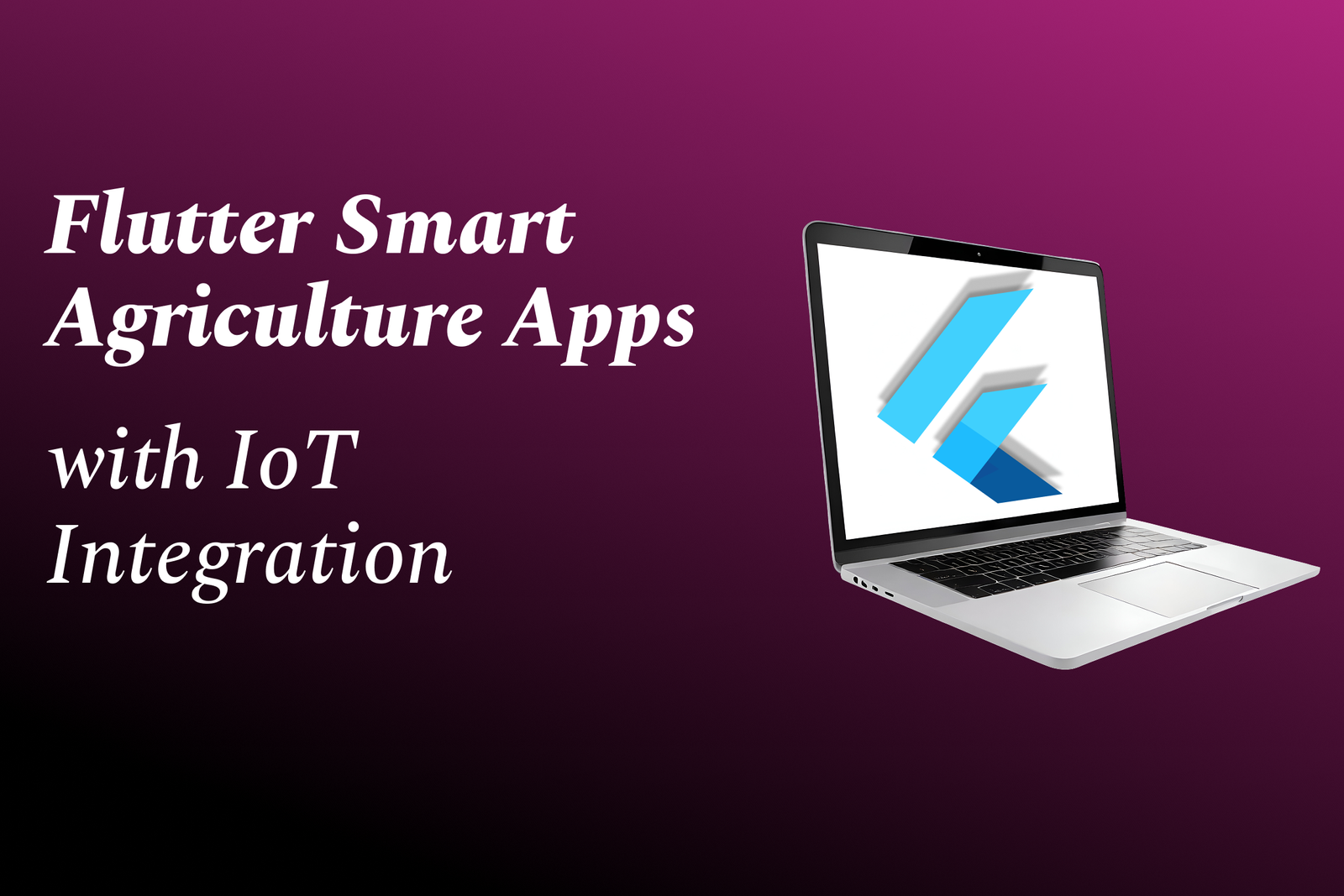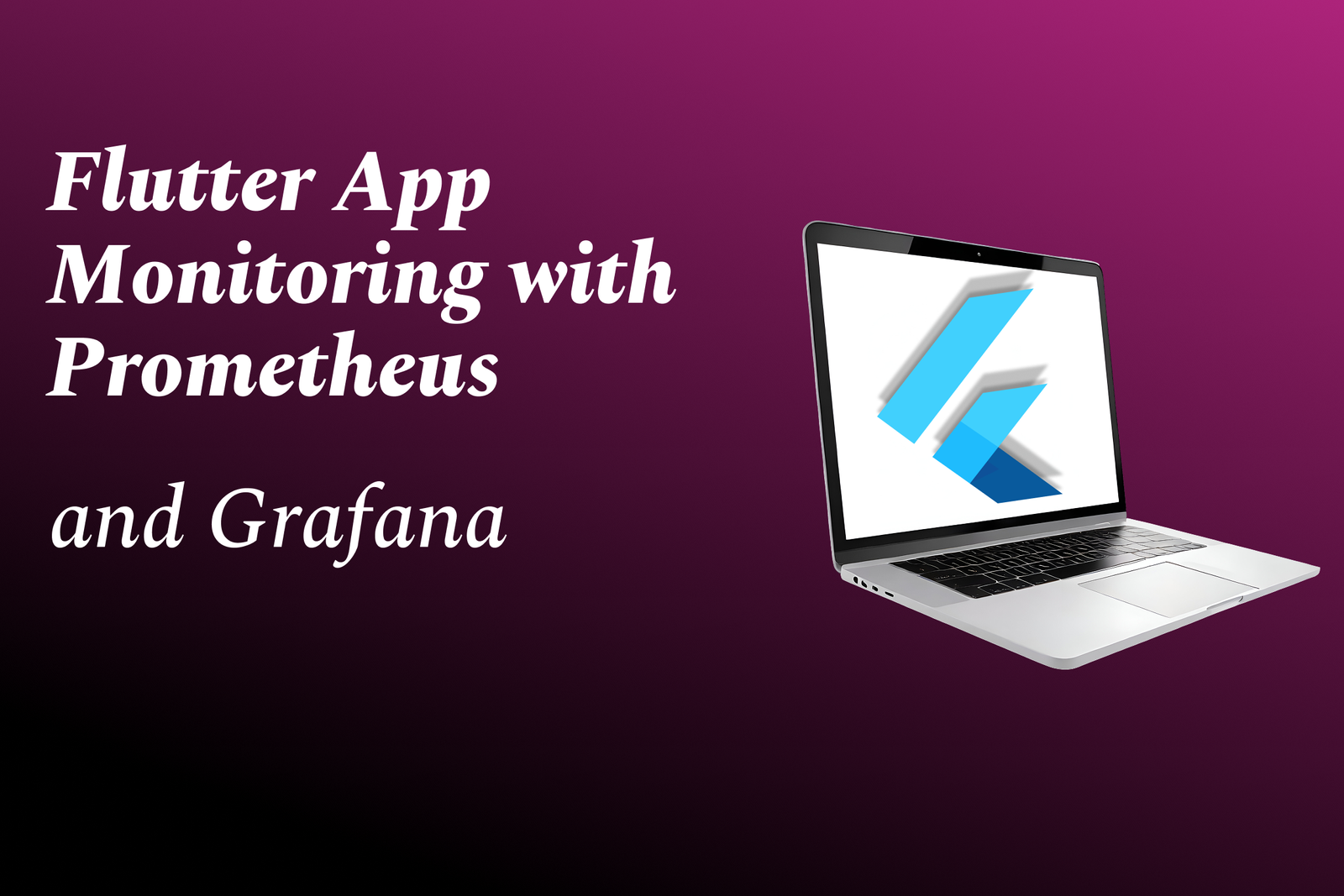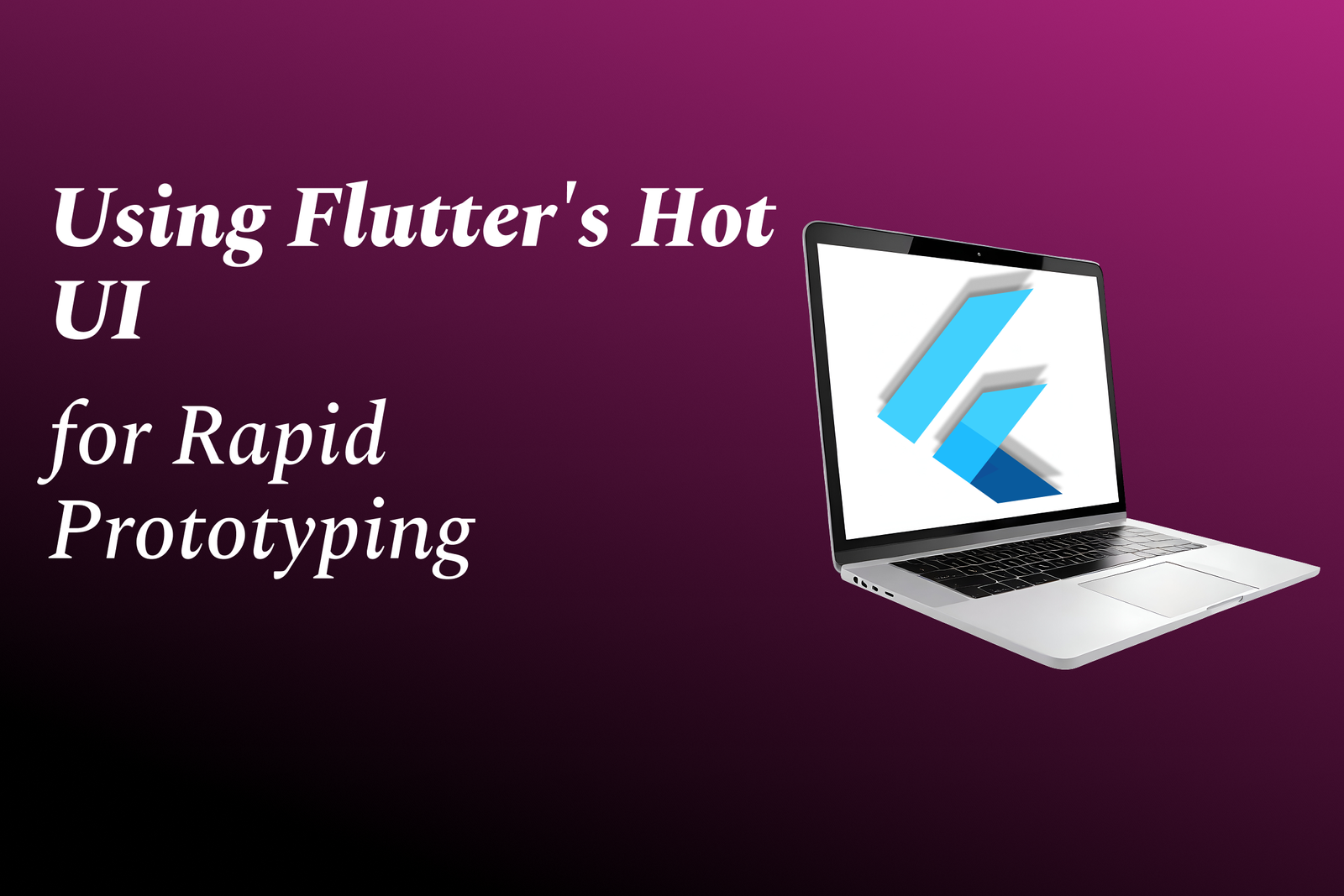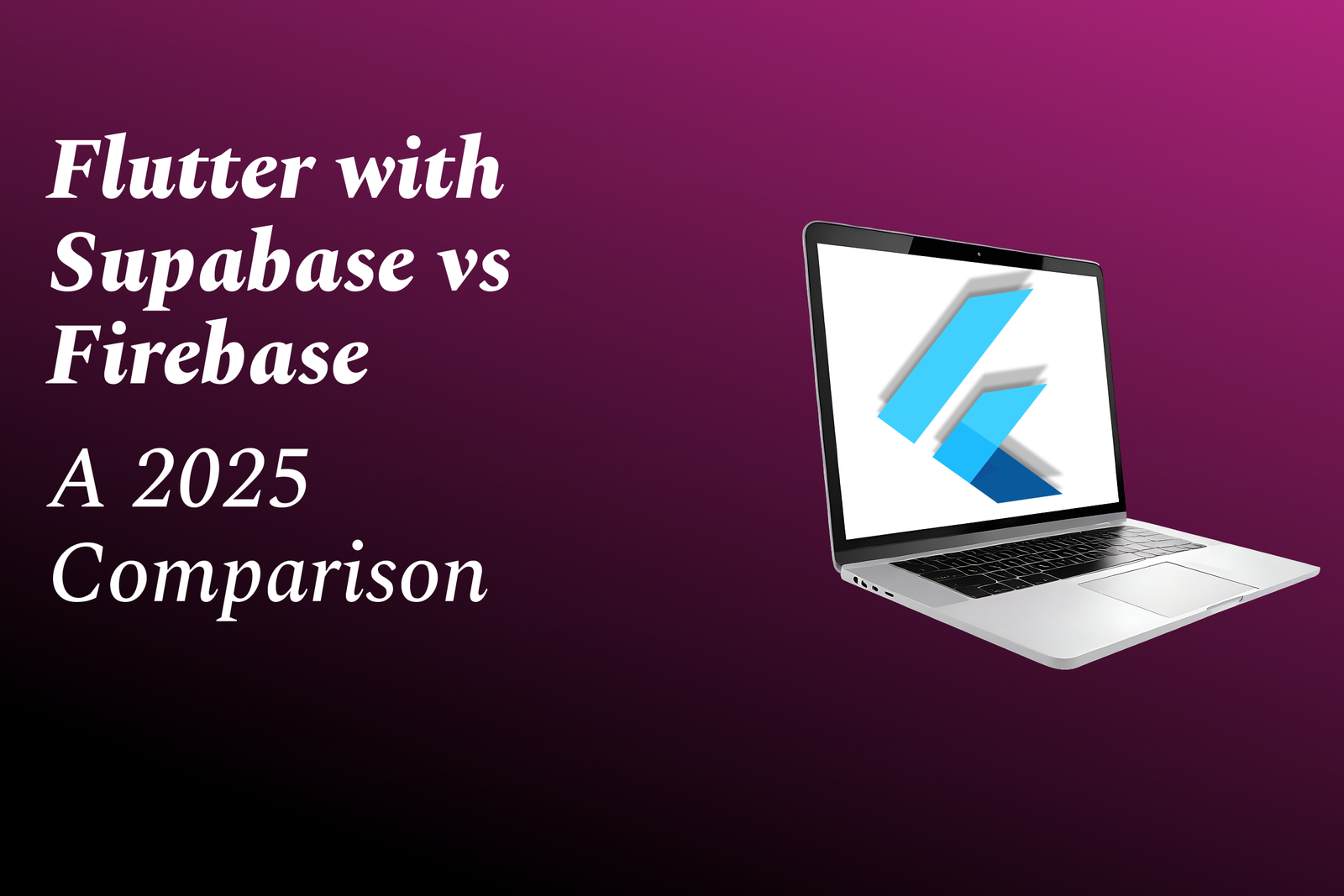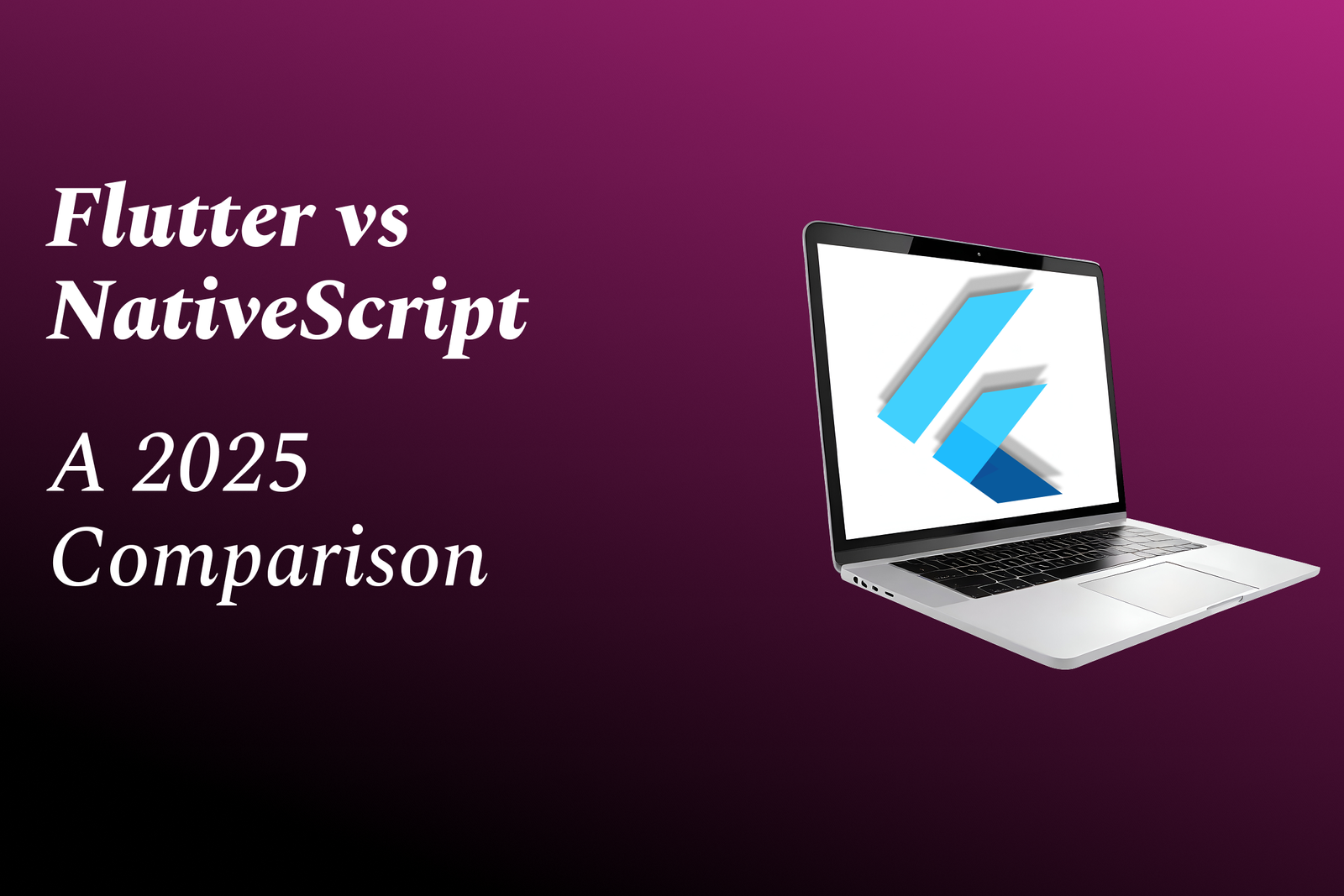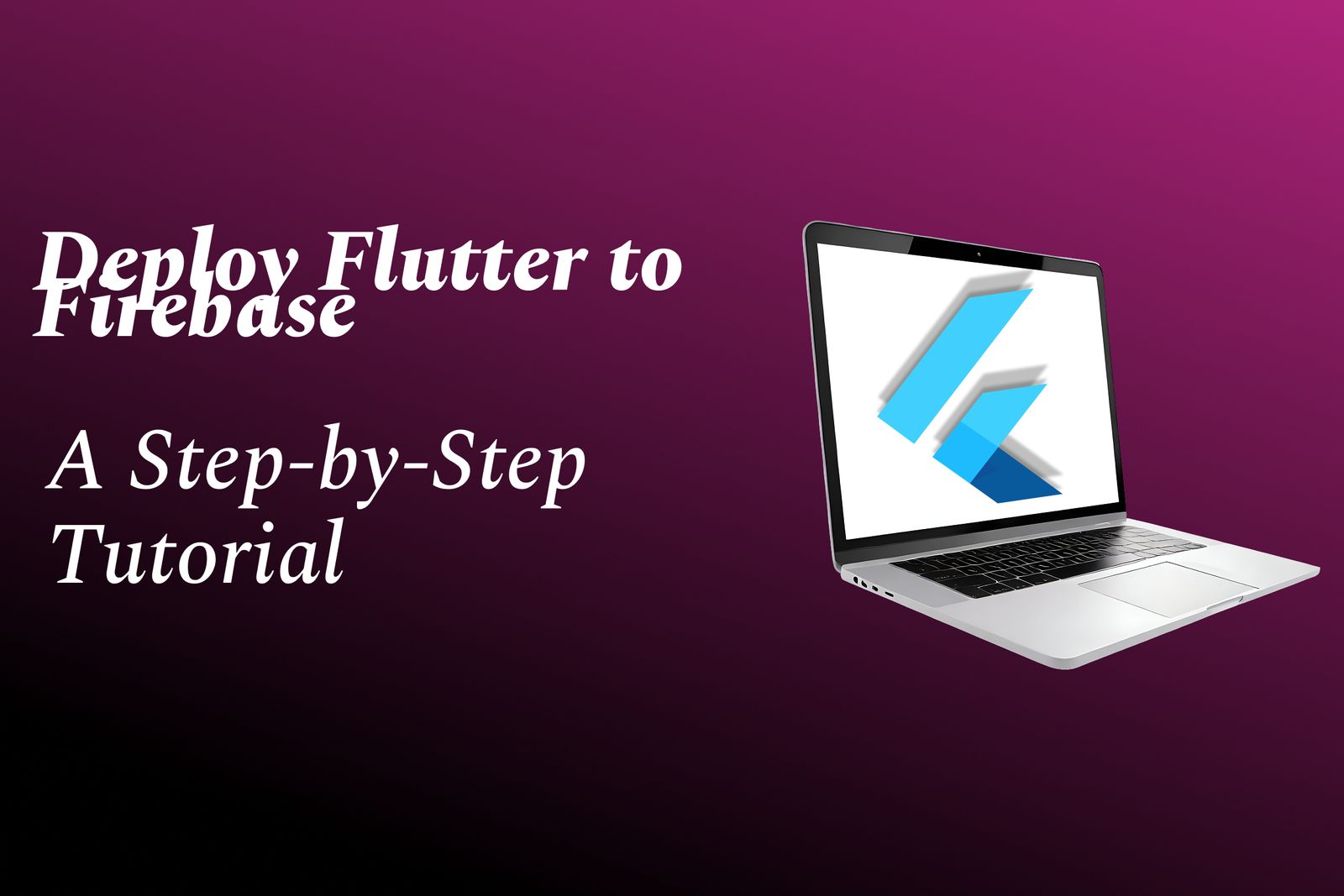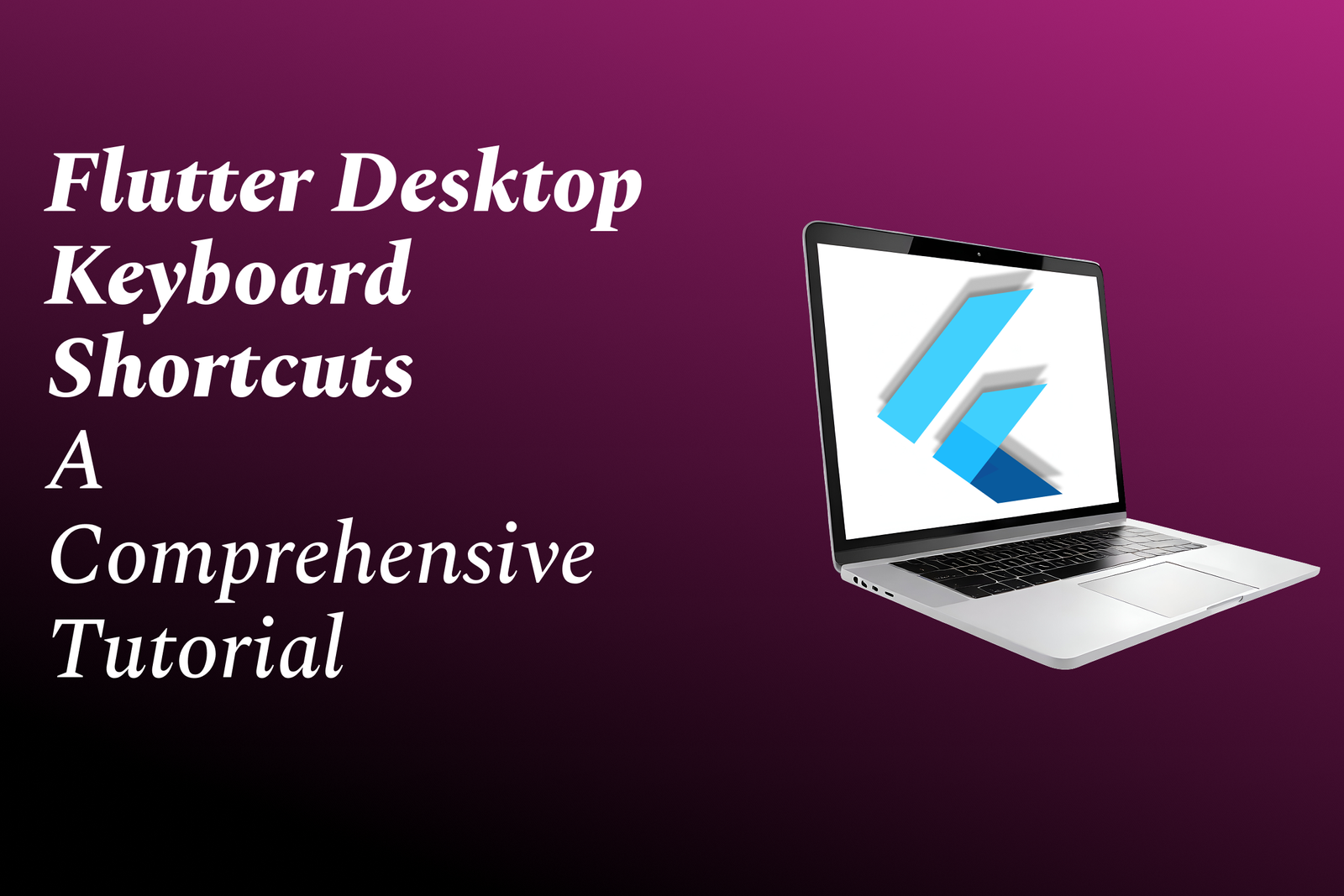Flutter Smart Agriculture Apps With IoT Integration
Flutter Smart Agriculture Apps with IoT Integration merge Flutter’s fast, cross‑platform UI framework with networks of sensors and actuators to deliver real‑time farm monitoring, analytics and remote control—tracking soil moisture, temperature, humidity, light and camera feeds, sending alerts, visualizing data dashboards, and automating irrigation or pest control. By combining IoT devices, edge/cloud processing and predictive analytics, these apps enable precision farming that reduces water and fertilizer use, boosts yields and cuts labor, all built more quickly and deployed across iOS, Android and web from a single Flutter codebase. JustAcademy offers certifications and hands‑on projects to learn how to design and implement these solutions.
Flutter Smart Agriculture Apps With IoT Integration
Flutter Smart Agriculture Apps with IoT Integration combine Flutter’s fast, cross‑platform UI and single codebase with networks of soil, weather and camera sensors to deliver real‑time monitoring, analytics and remote control of farm operations; this lets farmers visualize crop and field conditions on intuitive dashboards, receive alerts, automate irrigation or pest control, and apply data‑driven decisions that reduce water and fertilizer use, cut labor costs and increase yields. By using Flutter, solutions are quicker and cheaper to build and deploy across Android, iOS and web, making precision farming scalable for smallholders and agritech businesses alike.
To Download Our Brochure: **https://www.justacademy.co/download-brochure-for-free
**
Message us for more information: **https://api.whatsapp.com/send?phone=919987184296
**
Flutter Smart Agriculture Apps with IoT Integration combine Flutter’s fast, cross‑platform UI and single codebase with networks of soil, weather and camera sensors to deliver real‑time monitoring, analytics and remote control of farm operations; this lets farmers visualize crop and field conditions on intuitive dashboards, receive alerts, automate irrigation or pest control, and apply data‑driven decisions that reduce water and fertilizer use, cut labor costs and increase yields. By using Flutter, solutions are quicker and cheaper to build and deploy across Android, iOS and web, making precision farming scalable for smallholders and agritech businesses alike.
Course Overview
Build cross-platform Flutter apps that integrate IoT sensors and actuators for smart agriculture—collect real-time soil, weather and camera data, visualize dashboards, set alerts and remote controls, and deploy end-to-end solutions through hands-on projects and certification offered by JustAcademy.
Course Description
Learn to build cross-platform Flutter apps that integrate IoT sensors and actuators for smart agriculture—visualize real-time soil, weather, and camera data, implement alerts and remote controls, and deploy end-to-end projects with JustAcademy certification.
Key Features
1 - Comprehensive Tool Coverage: Provides hands-on training with a range of industry-standard testing tools, including Selenium, JIRA, LoadRunner, and TestRail.
2) Practical Exercises: Features real-world exercises and case studies to apply tools in various testing scenarios.
3) Interactive Learning: Includes interactive sessions with industry experts for personalized feedback and guidance.
4) Detailed Tutorials: Offers extensive tutorials and documentation on tool functionalities and best practices.
5) Advanced Techniques: Covers both fundamental and advanced techniques for using testing tools effectively.
6) Data Visualization: Integrates tools for visualizing test metrics and results, enhancing data interpretation and decision-making.
7) Tool Integration: Teaches how to integrate testing tools into the software development lifecycle for streamlined workflows.
8) Project-Based Learning: Focuses on project-based learning to build practical skills and create a portfolio of completed tasks.
9) Career Support: Provides resources and support for applying learned skills to real-world job scenarios, including resume building and interview preparation.
10) Up-to-Date Content: Ensures that course materials reflect the latest industry standards and tool updates.
Benefits of taking our course
Functional Tools
1 - Flutter SDK and Dart language
Flutter SDK and Dart are the foundation for building cross platform mobile apps taught in the course to create responsive UIs for agriculture dashboards.
Students receive guided labs on widgets, state management, and platform integration to build robust farm monitoring apps.
Practical assignments include building sensor dashboards, control panels for actuators, and map based field visualizations.
Emphasis is placed on performance optimization, hot reload workflows, and preparing apps for iOS and Android deployment.
Instructor led code reviews and template projects accelerate student learning and real world app delivery.
2) Android Studio and Visual Studio Code IDEs
Android Studio and VS Code are the primary development environments students will use for Flutter coding and debugging.
Training covers project setup, emulators, device provisioning, and debugging techniques specific to mobile IoT interactions.
Students learn to configure plugins, use Flutter DevTools, and run integration tests on virtual and physical devices.
Hands on sessions show how to manage SDKs, platform channels, and native build issues that arise in IoT integrations.
These IDEs are used in capstone projects where students iterate rapidly with instructor feedback.
3) Firebase (Authentication, Firestore, Realtime Database)
Firebase services are used to implement user authentication, real time telemetry ingestion, and cloud data storage in student projects.
Practical modules teach secure sign in flows, role based access for farm workers, and offline first data handling for intermittent connectivity.
Students map sensor streams to Firestore or Realtime Database and build real time dashboards that reflect live field conditions.
Workshops demonstrate security rules, indexing, and scalability strategies relevant to agricultural deployments.
Integration labs include push notifications for alerts and cloud functions for serverless processing of sensor events.
4) MQTT and Mosquitto Broker
MQTT is introduced as the lightweight messaging protocol for sensor to cloud communication in constrained farm networks.
Students set up Mosquitto brokers, publish/subscribe to topics, and simulate sensor fleets to understand QoS and retained messages.
Practical exercises cover secure MQTT with TLS, authentication, and bridging to cloud services like Firebase or AWS IoT.
Use cases demonstrate low power field sensors sending soil moisture, temperature, and actuator commands reliably over lossy links.
Troubleshooting labs teach message persistence, connection stability, and broker scaling for commercial deployments.
5) ESP32 and Arduino platforms
ESP32 and Arduino microcontrollers are used for on field prototyping of sensor nodes and actuator controllers.
Students solder basic circuits, flash firmware, and write MQTT/HTTP clients to stream sensor readings to the mobile app.
Lessons include power management for battery operated nodes, GPIO interfacing, and ADC calibration for accurate readings.
Hands on projects involve connecting DHT sensors, soil probes, relays for irrigation, and performing OTA firmware updates.
Instructors guide students through debugging serial logs, hardware interrupts, and stable connectivity patterns.
6) Raspberry Pi and Edge Computing
Raspberry Pi is presented as an edge gateway for aggregating sensor data, running local analytics, and acting as an MQTT bridge.
Training covers setting up Raspbian, Docker containers, Node RED flows, and interfacing with local sensors and cameras.
Students implement lightweight machine learning inference and preprocessing on Pi to reduce cloud traffic and latency.
Modules show how to host local dashboards, cache telemetry during outages, and provide secure remote access for maintenance.
Project work includes integrating camera based crop monitoring and scheduling irrigation based on local analytics.
7) Sensors and Actuators (soil moisture, DHT, pH, relays)
A broad set of environmental sensors and actuators are used in labs to teach real world data collection and control loops.
Students learn sensor characteristics, wiring, calibration, and filtering techniques to ensure reliable agricultural measurements.
Practical assignments show how to combine multiple sensors to derive meaningful indices like crop stress or irrigation need.
Actuator modules cover safe switching of pumps and valves, implementing debounce and fail safe mechanisms for field hardware.
Courses emphasize data validation, sensor drift detection, and maintenance practices for long term deployments.
8) LoRaWAN and Long range Connectivity
LoRaWAN modules teach low power wide area networking suitable for connecting distant sensor nodes across farms.
Students configure LoRa gateways, register end nodes, and troubleshoot uplink/downlink profiles for real deployment scenarios.
Workshops cover adaptive data rates, duty cycles, and strategies for minimizing transmit time while preserving data fidelity.
Integration exercises demonstrate bridging LoRaWAN network servers to MQTT brokers or cloud databases for app consumption.
Realistic case studies help students design hybrid networks combining Wi Fi, cellular, and LoRa for resilient coverage.
9) AWS IoT and Azure IoT Hub
Cloud IoT platforms like AWS IoT and Azure IoT Hub are introduced for device management, secure ingestion, and cloud analytics.
Students learn to provision devices, set up authentication certificates, and route telemetry to storage and serverless processing.
Labs show how to trigger workflows, invoke cloud ML models, and integrate cloud services with Flutter apps via REST or WebSockets.
Comparative exercises highlight pricing, scaling, and region specific considerations for agricultural deployments.
Capstone projects can be deployed on cloud platforms to demonstrate end to end solutions for potential employers.
10) Node RED and Flow based Integration
Node RED is used to teach rapid prototyping of IoT logic, data transformation, and device orchestration without heavy coding.
Students build flows that ingest MQTT messages, apply rules, and forward processed data to databases and notification systems.
Hands on labs include scheduling irrigation rules, aggregating sensor streams, and creating lightweight APIs for mobile apps.
Node RED dashboards are used as interim UI prototypes before building full Flutter front ends.
This tool accelerates iteration cycles in team projects and demonstrates enterprise integration patterns.
11 - InfluxDB, TimescaleDB, and Time series Storage
Time series databases are taught for efficient storage and querying of sensor telemetry at scale.
Students learn schema design for temporal data, retention policies, compression, and downsampling strategies.
Practical exercises include writing queries for trend detection, historical analysis, and feeding analytics back to apps.
Workshops connect time series storage to Grafana for visualization and to machine learning pipelines for predictive maintenance.
Emphasis is placed on cost effective architecture and archival procedures for long term farm data.
12) Grafana and Data Visualization
Grafana is used to create interactive visualizations and alerting dashboards for sensor networks and farm KPIs.
Students design dashboards that display live telemetry, historical trends, and anomaly alerts tailored for farm operators.
Labs teach panel composition, templating, and user access control to create role specific views for agronomists and managers.
Integration tasks include connecting Grafana to InfluxDB, Prometheus, and cloud data sources used by student projects.
Final showcases use Grafana demos alongside Flutter apps to present comprehensive monitoring solutions.
13) TensorFlow Lite and Edge ML
TensorFlow Lite modules introduce on device ML for crop disease detection, yield prediction, and anomaly classification.
Students train lightweight models, convert them for mobile/edge use, and integrate inference into Flutter applications.
Hands on labs cover model optimization, quantization, and performance profiling on mobile and Raspberry Pi hardware.
Use cases include camera based pest detection, soil property estimation from sensor patterns, and predictive irrigation control.
Students learn ethical considerations and validation methods for ML in critical agricultural contexts.
14) Edge Impulse and TinyML Tooling
Edge Impulse is used to accelerate TinyML workflows by collecting sensor data, training models, and deploying to microcontrollers.
Practical sessions show data augmentation, model testing on device, and exporting artifacts suitable for ESP32 or MCU inference.
Students perform real world data collection campaigns and iterate models to improve on device accuracy under field conditions.
Integration labs combine TinyML outputs with MQTT streams to trigger alerts or actuator responses via the Flutter app.
This tool helps students build low power intelligence into remote nodes for smarter farm automation.
15) Git, GitHub, and Version Control Practices
Version control instruction covers Git fundamentals, branching strategies, pull requests, and collaborative workflows.
Students practice code reviews, continuous integration hooks, and release management relevant to team based projects.
Assignments require repositories with clear README, issue tracking, and CI pipelines to build professional portfolios.
Workshops include using GitHub Actions for Flutter builds and running tests before deploying app artifacts.
These practices prepare students for industry standards and improve maintainability of IoT integrated projects.
16) Docker and Containerization
Docker is taught to containerize backend services, MQTT bridges, databases, and analytics components used in student solutions.
Students build reproducible environments for local testing and demonstrate deployment strategies for production gateways.
Lab exercises show multi container orchestration, environment variable management, and lightweight CI/CD integrations.
Docker based setups allow consistent replication of instructor provided sandboxes across student machines.
Emphasis is placed on secure container configuration and resource constraints for edge or cloud deployments.
17) CI/CD Tools and App Deployment
Continuous integration and deployment workflows are introduced to automate testing, build, and release of Flutter apps and cloud services.
Students configure pipelines that run unit/widget tests, lint checks, and generate artifacts for app stores or OTA distribution.
Workshops cover code signing, environment promotion, and rollback strategies essential for production grade agricultural apps.
Capstone projects utilize CI/CD to demonstrate rapid iteration and professional delivery processes to potential employers.
Practical guidance includes integrating infrastructure as code for cloud resources used in student deployments.
18) Bluetooth Low Energy (BLE) and Local Connectivity
BLE modules teach how to pair, read characteristics, and manage low power local links between phones and sensor devices.
Students implement secure over the air configuration of local nodes and design UI flows in Flutter for pairing and firmware updates.
Labs explore use cases like handheld soil scanners, proximity based field tools, and on site device management interfaces.
Best practices include handling intermittent connectivity, reconnection strategies, and privacy considerations for local data.
Students build sample apps that demonstrate robust BLE interactions in agricultural workflows.
19) Mapbox, Google Maps, and Geospatial Tools
Geospatial modules cover mapping, geofencing, and field boundary management integrated into Flutter apps for farm visualization.
Students learn to display GPS tagged sensor data, draw irrigation zones, and perform spatial queries relevant to field operations.
Hands on tasks include route planning for autonomous equipment and overlaying NDVI or other remote sensing layers.
Training covers coordinate systems, offline maps for remote areas, and efficient tile handling for mobile performance.
These skills enable students to deliver location aware features critical for precision agriculture solutions.
20) Postman, REST APIs, and WebSockets
API tooling instruction covers designing, testing, and documenting REST and WebSocket endpoints that connect devices and apps.
Students build secure APIs for data ingestion, control commands, and real time updates consumed by Flutter front ends.
Labs include mock server setups, authentication flows, rate limiting, and handling retries for unreliable networks.
WebSocket exercises demonstrate live telemetry streaming and command acknowledgements for responsive control interfaces.
API best practices taught in the course ensure interoperability and maintainable backend services for student projects.
Added topics we cover at JustAcademy:
21 - Kubernetes and Orchestration
Production grade deployment of services, scaling strategies, Helm charts, and edge aware clusters for gateway and backend containers.
22) Prometheus and Observability
Metrics collection, alerting, service level objectives, and integrating Prometheus with Grafana for end to end monitoring of IoT systems.
23) Apache Kafka and Event Streaming
High throughput telemetry pipelines, topic design, consumer groups, and connecting stream processing to real time dashboards and ML systems.
24) Apache Spark and Batch Analytics
Large scale sensor data processing, ETL jobs, time window aggregations, and preparing datasets for model training and historical analysis.
25) MLOps (MLflow, Kubeflow)
Model lifecycle management, experiment tracking, CI/CD for models, deployment to cloud/edge, and monitoring model drift in production.
26) Computer Vision with OpenCV and PyTorch
Image based crop and pest detection, segmentation, annotation workflows, and deploying vision models to mobile and edge devices.
27) Drone Integration and Aerial Remote Sensing
Autonomous drone data collection, orthomosaic processing, NDVI analysis, and integrating aerial imagery into farm dashboards.
28) Satellite Data and GIS Analysis
Using Sentinel/Landsat imagery, raster/vector processing, QGIS workflows, and deriving agricultural indices for large scale analytics.
29) Data Labeling and Annotation Workflows
Best practices for collecting labeled datasets, annotation tools, quality control, and scaling labeling for supervised ML in agriculture.
30) Security and Privacy (TLS, OAuth2, GDPR)
Protecting device cloud channels, secure key management, access controls, data minimization, and compliance considerations for user data.
31 - Performance Testing and Load Engineering
Simulating device fleets, stress testing MQTT/HTTP endpoints, capacity planning, and optimizing backend throughput for peak loads.
32) Redis, Memcached, and Caching Strategies
Low latency caching patterns, session stores, and using in memory databases to accelerate dashboards and command responses.
33) Message Brokers (RabbitMQ, NATS)
Reliable task queues, RPC patterns, delivery guarantees, and choosing brokers for command/control and background processing.
34) Backend Frameworks (Node.js, Django, Spring Boot)
Building scalable APIs, authentication layers, background workers, and integrating with mobile apps and device fleets.
35) GraphQL and API Design Patterns
Designing flexible data APIs, subscriptions for live updates, schema design, and client optimization for mobile consumption.
36) Testing Frameworks and QA Automation
Unit, integration, and end to end testing for Flutter (widget tests), backend services, and hardware in the loop verification.
37) Accessibility & UX for Field Users
Designing usable mobile interfaces for low literacy, multilingual users, offline first UX, and accessibility compliance for field operators.
38) Product Management & Go to Market Strategy
Translating technical projects into deployable products, pricing models, pilot planning with farmers, and stakeholder engagement.
39) Soft Skills, Portfolio Building & Interview Prep
Resume workshops, capstone presentation coaching, GitHub portfolio curation, and mock interviews with technical feedback.
40) Ethics, Sustainability & Impact Measurement
Assessing environmental impact, data ethics for automated decisions, and measuring social/economic outcomes of deployed solutions.
If you want more focused additions (e.g., AI, cloud, hardware), specify which area and more topics will be added.
Browse our course links : https://www.justacademy.in/all-courses
To Join our FREE DEMO Session: https://www.justacademy.in/register-for-course-demo
This information is sourced from JustAcademy
Contact Info:
Roshan Chaturvedi
Message us on Whatsapp: https://api.whatsapp.com/send?phone=919987184296
**Email id: mailto:info@justacademy.co
**
https://www.justacademy.co/blog-detail/flutter-fintech-security:-a-best-practices-guide
https://www.justacademy.co/blog-detail/flutter-developer-salary-2025:-a-global-comparison
https://www.justacademy.co/blog-detail/flutter-test-environments:-a-setup-guide
https://www.justacademy.co/blog-detail/flutter-music-streaming-ui:-a-clone-tutorial
https://www.justacademy.co/blog-detail/flutter-flight-booking-app-ui:-a-tutorial
Flutter IoT Smart Agriculture App: Real-Time Monitoring & Precision Farming Solutions
How to Build Flutter IoT Smart Agriculture Apps: Real-Time Monitoring & Precision Farming
Build Flutter IoT Smart Farming Apps — Real-Time Monitoring & Precision Agriculture
Build Flutter IoT Apps for Smart Farming — Real-Time Monitoring & Precision Agriculture
